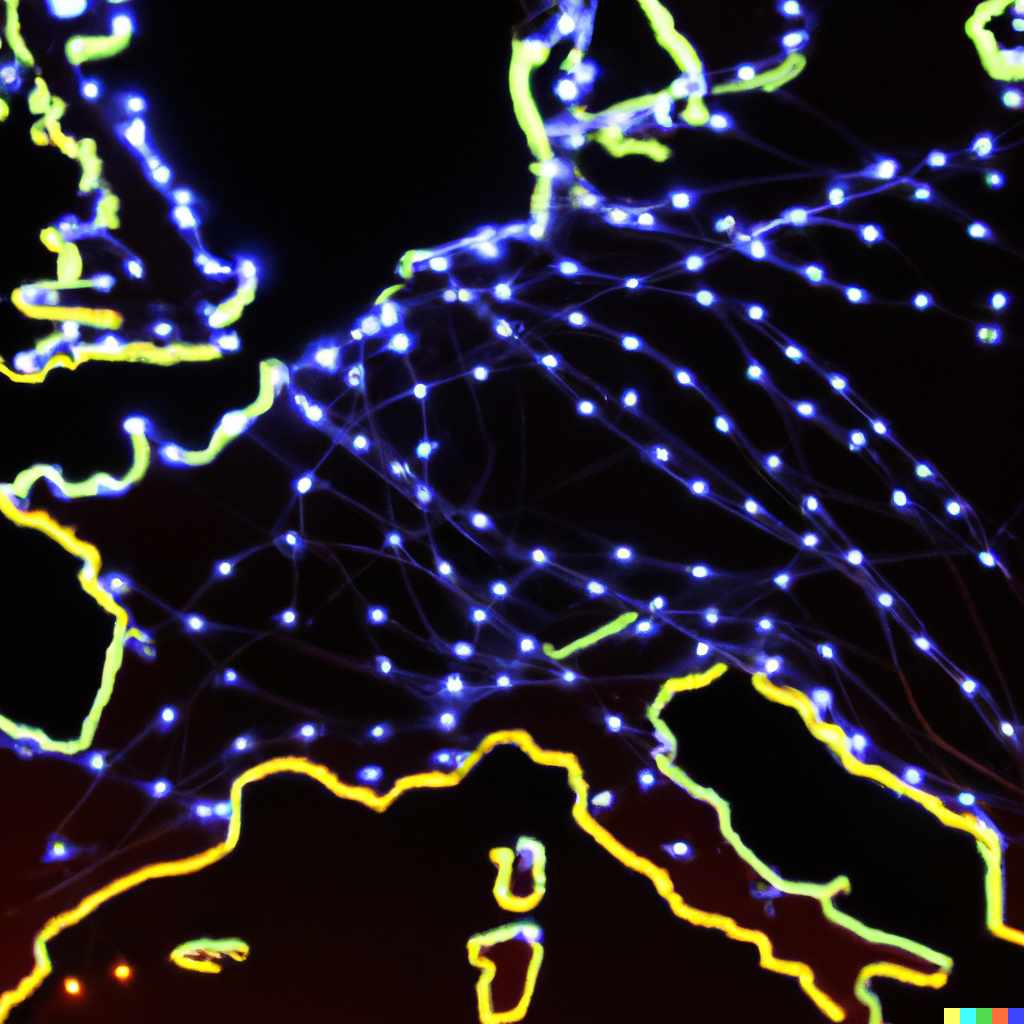E-Government and Digitalization

Comparative Law of Public Automated Decision-Making. An Outline
Herwig C.H. Hofmann | 9 January 2023 | Issue 1/2023
Jurisdictions within the EU and countries around the world are beginning to regulate the use of public Automated Decision Making (ADM). The legal framework thereof differs considerably, and its development is at an early stage. This contribution sets out a possible comparative research framework, with other words elements to compare the different solutions developed by the legal systems in the face of challenges of ADM.
Read More
The digitalization of tendering procedures: from Public Procurement Code to Public Procurement digitalization decree
Elio Guarnaccia | 19 December 2022 | Issue Public Administration facing the challenges of digitalisation (2022)
The present study aims to retrace the digitalization process of the public procurement starting from the previsions of the legislative decree n. 50/2016 to Public Procurement digitalization decree n. 148/2021, embraced with over four years delay compared with the previsions. For this purpose, we face the extremely wide jurisprudential production in matter of telematic tendering procedures. Namely, the decree is inserted in a context in which the jurisprudence has extensively addressed the issues related to the digitalization of the tendering procedures, attempting to make this heavy jurisprudential stratification, not devoid of inconsistencies and relevant developments.
Read More
The role of innovative procurement as a sustainability tool. The paper analyses the relationship between sustainable development and public procurement system from a juridical perspective. After having examined the application of the “Sustainable Public Procurement” strategy in so-called “traditional” procurement, the study explores the sustainability benefits that can be derived from the use of so-called “innovative” procurement by contracting administrations.
Read More
The SOLVIT Network after two decades: successes, shortcomings, and the way forward
Diana-Urania Galetta, Micaela Lottini, Jacques Ziller | 12 December 2022 | Issue Public Administration facing the challenges of digitalisation (2022)
SOLVIT is an on-line, free-of-charge service operating in all EU countries (and in Iceland, Liechtenstein, and Norway), which officially started its activity in July 2002. It was born as a network of national SOLVIT Centres, connected via an internet-based, multilingual network, with the aim of getting the national Centres to work together to reach the goal of helping businesses and citizens to overcome cross-border issues. Over time, and not without possible weaknesses in both practical and legal terms, it has developed to a multi-faceted single market tool, which also serves the purpose of identifying and try to overcome incorrect application of EU rules by national and local authorities.
Read More
Federalism, legal fragmentation and register modernisation: challenges for the digital transformation of public administration in Germany
Jonas Botta | 8 December 2022 | Issue Public Administration facing the challenges of digitalisation (2022)
A digital public administration is crucial for providing citizens (especially in times of crisis) with effective access to administrative services. Political leaders in Germany agreed on this principle during the global COVID-19 pandemic. However, the implementation of the Online Access Act - the main German law on administrative digitalisation - and of the Single Digital Gateway Regulation (EU) 2018/1724 has raised considerable (legal) problems. This article therefore not only looks at the current implementation status of the two pieces of legislation, but in particular identifies three challenges for the digital transformation of public administration in Germany: federalism, legal fragmentation and register modernisation.
Read More
Digitalisation of health data and their interoperability in the European Union
Constanze Janda | 6 December 2022 | Issue Public Administration facing the challenges of digitalisation (2022)
Health data are sensitive data and must therefore be protected from unauthorised access. However, exchanging individual patient information is crucial for coordinating treatment between different medical professions and for the statutory health insurance schemes. Digitalisation of health data will facilitate all these processes. To promote EU-wide mobility of patients, the European Commission has proposed the establishment of a European Health Data Space. It is intended to trigger technological development in the member states, given that to date digitalisation has been used to different extents throughout the union. It is not guaranteed that patients in all member states will have access to their health data and thus be able to receive treatment or fill prescriptions within the single market. At the same time, the common experiences in the SARS-CoV2-pandemic made clear that there is a vital need for using patient data as a tool for monitoring health threats and for improving the coordination of both preparedness and response measures in times of health crisis.
Read More
Digitalisation of State and administration: guiding images, successes and deficit analysis in the context of the corona pandemic
Jörn von Lucke | 1 December 2022 | Issue Public Administration facing the challenges of digitalisation (2022)
The digitalisation of the State and administration is a challenging generational task. The goal of many transformation efforts is a State functioning with digital technologies. For the efficient performance and completion of public tasks with digital solutions, convincing guiding images are needed that offer a valuable orientation framework with scope and perspectives. Despite some successes in Germany, the federal, State and local governments still face considerable challenges in implementing digitalisation. This became particularly obvious during the corona pandemic, when the weaknesses of insufficient digitalisation became noticeable in many areas and posed considerable problems for the economy and society. This contribution looks at the guiding images relevant to Germany and highlights successes, weaknesses and expectations up to now. With a view to concretising a digital European administrative space, there still is a need for numerous joint inter- and transdisciplinary efforts by partners from administration, science, business and civil society, which should not only be conceived and oriented regionally or nationally, but also at the European level from the very beginning.
Read More
Algorithmic legality in administrative action and procedural violations’ regime
Federico Nassuato | 24 November 2022 | Issue Public Administration facing the challenges of digitalisation (2022)
The use of algorithms and A.I. systems in administrative action has strongly challenged the requirements of administrative due process. Due to the absence of national statutory rules on administration by algorithm, administrative courts have established a set of principles (the so-called “principles of algorithmic legality”) in order to protect the legal position of citizens involved in administrative procedures, borrowing them mostly from the EU General Data Protection Regulation (GDPR). Case law specifically requires public bodies to comply with: a) the citizen’s right to access to meaningful information concerning the automated decision-making; b) the citizen’s right not to be subject to a decision based solely on automated processing; c) the prohibition of algorithmic bias. After a brief overview of the content of these principles, this paper aims to analyse the relation between them and Article 21-octies, par. 2 of Law No. 241/1990. This paper questions whether they have been understood by the courts as reinforced procedural rules to avoid the “weakening” effect, provided by Article 21-octies with regards to procedural impropriety of non-discretionary decisions. In particular, this paper questions whether the strengthening of the procedural rules could be aimed at counterbalancing the lack of substantive legality, due to the exercise of implied powers by the public bodies in using algorithms, or whether it should be based on a different legal reasoning.
Read More
Challenges and opportunities for the European Union: a step forward
Giancarlo Vilella | 14 October 2022 | Issue 4/2022
This paper analyses how interventions of the EU represent both challenges and opportunities: on the future of Europe, the rule of law, the economy, digitalisation. The appraisal takes account of the consequences of the war in Ukraine, which have influenced those interventions: indeed, the consequences of the war come on top of the demands of the Conference as far as the future of Europe is concerned, are superadded to the anti-Covid actions as far as the growth of the economy is concerned, and make the process of securing the digital sovereignty of the Union more urgent. In closing, the article puts forward a number of reflections, in particular it is asked whether in this new context the EU is emerging as a political actor, whether it has the ambitions consonant with its development, whether it can succeed in governing the profound social changes necessitated by digitalisation and, lastly, whether it continues to be a bulwark for the defence of democracy.
Read More
The development of a new model of urban regeneration in light of the digitalisation of public administration
Leonardo Scuto | 29 September 2022 | Issue 3/2022
This article aims to investigate the distinctive features of the phenomenon of urban regeneration as an expression of the principle of sustainable development, in light of the digital administration model, i.e., a new structure designed to promote the digitalisation of decision-making procedures and a transformation of administrative functions, using Information and Communication Technologies (ICT).These elements should be the principles upon which the new urban development model is to be based. The influence of ICT on environmental assessments is crucial to fully understand both the potential and challenges faced by the Italian legislator when addressing urban regeneration. The purpose of this paper is, therefore, to propose a method to achieve the best possible interaction between traditional and innovative forms of urban regeneration, trying to identify, specifically, how local authorities can take advantage of new technologies both in a procedural and environmental perspective. It is emphasized how innovative technological solutions today find their highest expression in the development of a new urban model – the renewable energy community – which is one of the means identified to pursue the goals set out by the SDG No. 11 drafted by the United Nations.
Read More